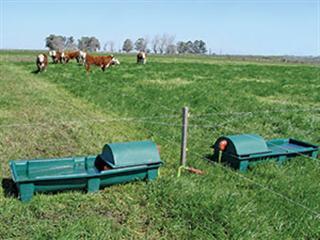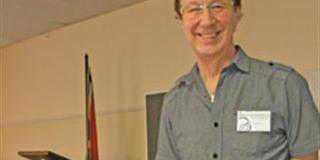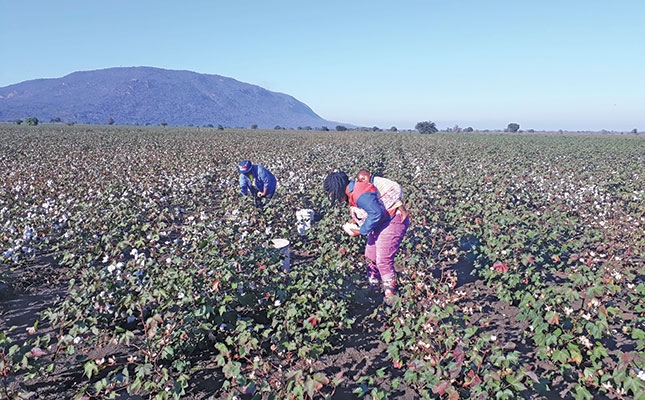
“Look at expensive cars. They are sold on ‘quality attributes’,” says Ignacio Galli. “Exactly the same needs to happen with meat production.” Galli is a researcher at the Instituto Nacional de Tecnología Agropecuria (Inta) in Concepción del Uruguay, Argentina. Inta has been studying cattle production for more than 50 years, and the Inta branch near Concepción del Uruguay is currently researching optimal properties for an ecological feedlot.
“We started looking at ways to create quality attributes in red meat,” Galli explains. What Inta was trying to find was a system in which farmers could run a feedlot and farm grain on the same piece of the land, increasing its output. According to Galli, researchers had to keep the quality of both the product and process in mind. In terms of the product, they considerered tenderness, fat content, fat quality and cooking quality. At the same time, any potential Escherichia coli (E. coli) spread has to be prevented.
In terms of quality of process, they looked at animal well-being, soil quality and the impact on climate change. In Argentina, feedlots have been increasingly used since the 1980s, says Juan Vittone, a vet and researcher at Inta. They provide stable input and output, neither of which can always be achieved on natural grazing. Feedlots also have the flexibility to adapt to economic conditions, as they can expand or contract when necessary. A feedlot can significantly increase the amount of meat produced per hectare.
Currently, Argentina bases its system on the Texas system, which works on accommodating one animal per 10m². Vittone says these feedlots have been designed for large-scale businesses and can cost up to US$10 million (R100 million) to establish. Most feedlots in Argentina cannot afford to run on such a large scale. In smaller feedlots, it becomes uneconomical to invest the same amount of capital, and infrastructure is often less than ideal. “As soon as the size of the feedlot decreases, you get undesirable results,” says Vittone.
Weather differences
Texas has a dry climate and rocky surfaces, whereas the wet Pampas in Argentina, with its clay soils, receives up to 1 300mm of rain per annum. In the Pampas, rain is likely to lead to muddy conditions, and cattle have been known to drown in very wet periods.
“Up to 70kg of mud can collect on the animals’ coats,” says Vittone. “This mud can’t be entirely washed off at abattoirs, and there’s a possibility of E.coli transfer during slaughter.” Vittone adds that the ideal space per animal in feedlots in the Entre Ríos province of Argentina is between 80m² and 100m².
Inta developed a feedlot system for farmers who fatten fewer than 1 000 cattle and run mixed operations. They wanted to find the stocking rate at which the problem of soil and water contamination (through dung) would become an advantage by distributing nutrients that would increase primary agricultural production. In the experiment, Inta used a mobile feeding trough that was moved around to ensure even distribution of dung. The only other infrastructure was a mobile solar-powered electric fence.
No fibre provided
Feed consisted of 90% whole grain yellow maize and 10% protein concentrate. According to Galli, fibre is left out of the diet to reduce the release of methane gas. Whole grain maize forces the cattle to chew, releasing saliva that reduces the pH in the system. In the most successful trial, Inta placed the food on one side of the field and the water on the other. Cattle were forced to walk across, which improved uniform dung distribution and lessened compaction around the feeding trough.
Vittone stresses that animal weight is important and animals should enter the system at above 200kg. If they do not weigh enough, the feed has to be increased, which leads to increased fat deposition in the meat. This could be perceived as unhealthy by consumers.
Important factors
The feedlot system is applied during winter. In summer, the same land is used for crops. Land is stocked at 100 head/ha in the feedlot. Cattle are fed ad lib from a mobile feeding trough that is reloaded once a week. The trials were run for 187 days and cattle were rotated every two weeks to prevent soil compaction.
Results
During the trials, Inta found an increase in maize yield from 11,8t/ ha to 13t/ha. Soya bean yield increased from 3,8t/ha to 4,15t/ha. Only a minimal amount of mud was created. The system trialled resulted in improved fertility. In Argentina, land used for crop production often has a phosphate deficit. Inta’s trials saw an average increase of 20ppm in P, regardless of the P-levels prior to the trials.
There was compaction of 1,3%/cm. The same system can be used for cattle that are not in a feedlot. “A cow can eat 3% of its bodyweight per day,” says Vittone. “Non-feedlot cattle should receive 2% of their bodyweight per day. This allows for growth without fat deposition.” Argentinian researchers and farmers stress the importance of being aware that these trials, yields and feeding regimes were successful in conditions found on the Argentinian Entre Ríos province and may not apply in other regions.
About Inta
Instituto Nacional de Tecnología Agropecuria (Inta) has 49 research stations throughout Argentina that conduct area-specific agricultural research. Inta has a total of one million hectares available for research. The Concepción del Uruguay branch test station has 1 100ha of prime agricultural land and runs 1 200 cattle including 600 cows for breeding purposes on veld. The other 600 cows are experimentally run on planted pastures. Half the land is used for crop production the other half for grazing.













